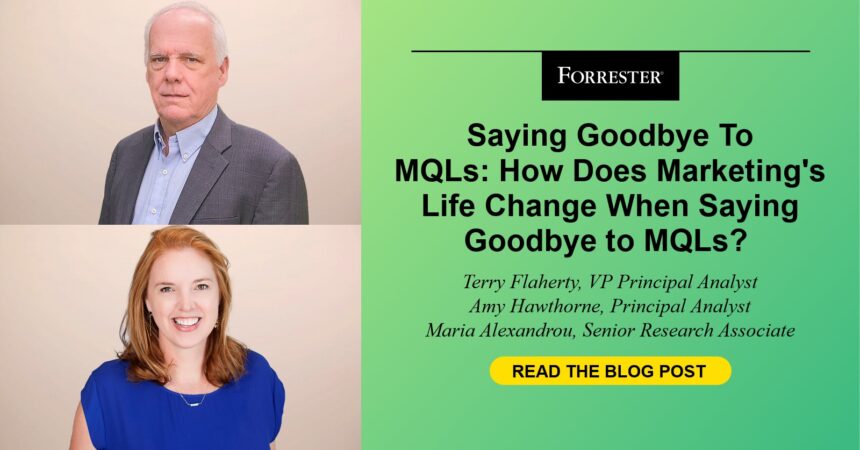This blog post is part of the Saying Goodbye to MQLs blog series, where we answer your questions related to making the shift from leads to buying groups and opportunities.
Saying goodbye to MQLs has impact on the roles and responsibilities of marketing, the revenue development rep function (RDRs and BDRs), and sales. There are five key ways that marketing’s role changes as the focus shifts from individual MQLs to one focused on revenue process transformation, leveraging opportunities as containers for all buying group members and signals associated to the deal. These changes include the following:
- Increased precision in targeting. In an MQL-centric world, targeting is often limited to the account level or even industry level. A major shift in revenue process transformation requires an increased precision in targeting. While a focus on accounts is still important, marketing should expand their targeting strategy to identify potential opportunities that exist within an account, as well as the related buying-group size and roles for each of these opportunities.
- Recognizing the importance of signals. Every interaction that occurs, both digitally and face to face, with both known and anonymous people, produces a signal. That signal can be very valuable in understanding a potential buying group’s level of interest and insight on propensity to buy. Marketing must actively listen for all relevant signals instead of basing the revenue process off a single MQL signal. Signals provide the basis of a prioritization strategy that defines when potential opportunities progress from marketing to the RDR to sales.
- Delivering context and insight. In B2B marketing and sales, there are a plethora of signals that are generated because of our marketing and sales efforts. To maximize the value of signals, it’s important to understand their contexts. At a minimum, signals should be interpreted to understand “who” produced the signal (the account and potentially the person) and “what” solution they are interested in. With this information, we can start to form a buying group. Signals can also indicate the likely stage of the buying journey that the prospect is at, as well as other changes that may impact propensity to buy. Marketing must interpret the contexts of all opportunity signals and deliver this insight to all functions in the revenue process in an easy-to-understand and actionable way. With this insight, we can then optimize our response to the signal, be it with marketing programs, RDR outreach, or sales engagement.
- Enhancing programs to drive buying-group expansion. The engagement of multiple members of a buying group is one of the best indicators of propensity to buy. The more members of the buying group who engage, the higher the conversion rates are in the revenue process. Marketing should develop programs specifically designed to drive engagement across the buying group. These programs should be triggered based on the initial engagement signal for an opportunity. For optimal performance, these programs should be tailored to the specific needs based on the roles of the target buying-group member.
- Involvement throughout the entire revenue process. An MQL-centric revenue process is often based on siloed roles across functions in the revenue process. Marketing drives engagement until an individual reaches the MQL scoring threshold; the MQL is sent to the RDR team for qualification and then forwarded to sales. This way, there is little to no cross-functional collaboration, and the entire MQL scoring and qualification process stops once an initial person in an account is passed to sales. In a best-practice process, marketing should be collaborating with sales throughout the process. Insight from any detected signal should be captured and reflected on the opportunity, no matter what stage the opportunity is currently at in the process. Marketing should be developing content and programs that can be leveraged by sales throughout the process. And most importantly, marketing and sales should be operating from the same revenue dashboards.
The way that marketing and sales should work together has fundamentally changed, and organizations making this transition are seeing dramatic increases in revenue growth and efficiencies.
You can read all the posts in the Saying Goodbye to MQLs blog series here. Have more questions? Send them here, and we’ll respond in future blogs.








